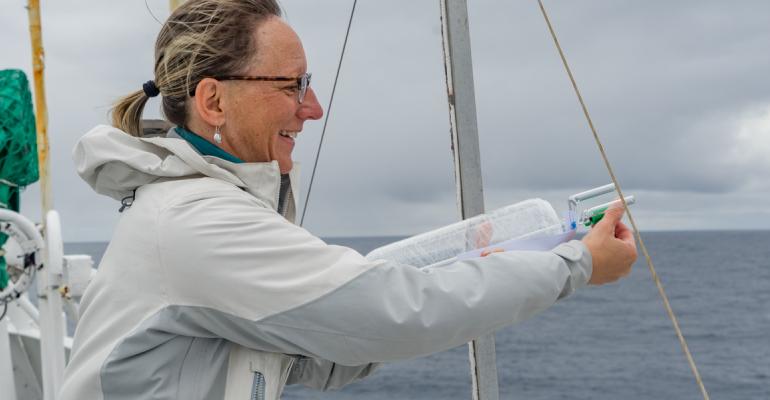- AUTHORCarbon dioxide. Where does it come from? Where does it go?
- February 10 2017
Carbon dioxide. Where does it come from? Where does it go?

Radio-carbon researcher Jocelyn Turnbull from GNS science outlines how her research informs the New Zealand Earth System Model.
Jocelyn: We all know that it comes from burning of fossil fuels (coal, oil and natural gas), which produce carbon dioxide, which goes into the atmosphere, which makes the world warmer. What you may not know is that of the carbon dioxide we produce from fossil fuels, only about half stays in the atmosphere. This has been remarkably consistent since the start of the industrial revolution – each year, only about half the carbon dioxide we produce stays in the atmosphere, even as the actual amount of carbon dioxide we produce keeps increasing each year.
So where does the other half go? We know that it isn’t escaping into space, so it must be going into the land or into the oceans, or both. The answer is that Planet Earth is doing us a massive favour, or perhaps just trying to save herself, by taking up that carbon dioxide into both land and oceans. The million dollar question is what drives the uptake of carbon into these sinks, and how might that change in the future? Will these sinks “fill up”, causing a massive acceleration of global warming? Or by learning how they work, can we perhaps help these sinks to take up even more carbon and reduce global warming?
It turns out that the Southern Ocean is the most important of these “carbon sinks”, taking up by far the most carbon dioxide of any region of the world. But we scientists are in the midst of an argument about this. As the climate has warmed, the westerly winds over the Southern Ocean (the roaring forties and furious fifties that we Kiwis know so well) have increased. Research based on measurements of carbon dioxide over the Southern Ocean says that the increase in the westerly winds has caused the Southern Ocean to do a poorer job of removing carbon from the atmosphere. Other studies based on model simulations of ocean processes give an opposite answer; that the Southern Ocean has been getting better at taking up carbon. The problem is that we just don’t have enough measurements in the Southern Ocean or the atmosphere above it, because as you might have noticed, the Southern Ocean is the least populated part of the world, and it’s expensive and difficult to make measurements there.
We are embarking on a new project between GNS Science and NIWA, funded by the Deep South National Science Challenge and a Royal Society of New Zealand Marsden grant. We collect air samples from Arrival Heights in Antarctica, Baring Head in Wellington, on ships travelling between New Zealand and Antarctica, and tree rings from New Zealand’s Sub-Antarctic islands to make a suite of new measurements and model simulations over the Southern Ocean and resolve the argument – is the Southern Ocean carbon sink sinking or swimming?
More about Jocelyn’s adventure on Stuff: Environment – Kiwi research into Southern Ocean could change global warming predictions
Content provided by Jocelyn Turnbull, GNS Science. To contact Jocelyn please refer to her organisational bio at GNS